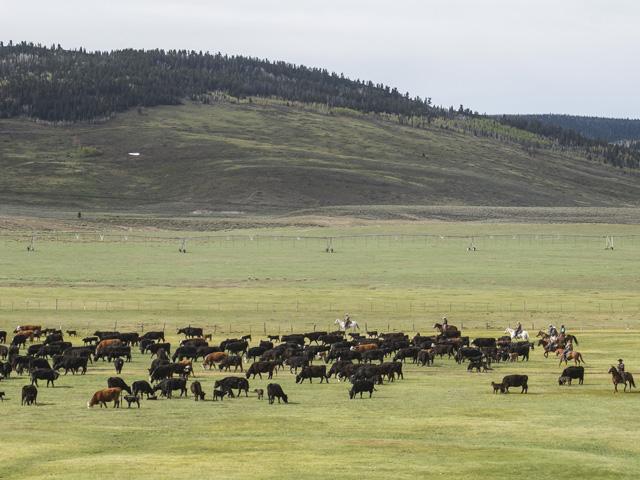Call the Market
Cattle Inventory Report Paints a Bullish Outlook
It's not often that Mondays bless the market with a plethora of supportive bullish news, but this past Monday (Jan. 31) wasn't your typical Monday. The cattle market is on the cusp of a new trajectory! Throughput finally turned over 120,000 head in a single day after four weeks of waned processing speeds, the futures market traded positively for both live cattle and feeder cattle contracts and the January 2022 Cattle Inventory report touted fewer numbers of beef and beef cow replacements.
Specifically, Monday's Cattle Inventory report shared that all cattle and calves in the U.S., as of Jan. 1, 2022, totaled 91.9 million head -- down 2% from January 2021. Beef cows totaled 30.1 million head -- down 2% from 2021, and beef replacement heifers totaled 5.61 million head, which was down 3% from January 2021. Steers weighing 500 pounds and over totaled 16.6 million head, which was down 1% from a year ago, and all calves under 500 pounds totaled 13.9 million head, which was down 3% from January 2021.
By now you should be noticing a trend from Monday's Inventory report -- down, lower, less, fewer -- all telling and pointing to the conclusion that the U.S. cowherd is in a liquation phase. One may be quick to point to the 2021 drought and deem it responsible for the tipping point of the U.S. cowherd inventory, but it was actually back in 2020 when we saw the first subtle signs the industry was entering a liquidation cycle. Since then, the market has seen a thin reduction year-over-year, but it was Monday's report that demanded every cattleman's attention, as the market now possess the fewest beef cows it had in the last seven years.
P[L1] D[0x0] M[300x250] OOP[F] ADUNIT[] T[]
The writing is on the wall and as thick as the graffiti on a 50-year-old train. When, not if, the country gets moisture, female prices are bound to get wild. Of the 10 states with the most beef cows, every single one of them saw a reduction in beef cow numbers. When compared to the data of a year ago, Texas's beef cowherd fell by 3%, Oklahoma's beef cowherd fell by 1%, Missouri's beef cowherd fell by 5%, Nebraska's beef cowherd fell by 3%, South Dakota's beef cowherd fell by 11%, Kansas's beef cowherd fell by 2%, Montana's beef cowherd declined by 6%, Kentucky's beef cowherd fell by 1%, North Dakota's beef cowherd fell by 2% and Florida's beef cow population fell by 4%.
When analyzing the beef replacement female data, one found that Kentucky beef replacement heifers fell by 8% (year-over-year), Montana's beef replacement heifers fell by 14%, Nevada's beef replacement heifers fell by 12%, Texas's beef replacement heifers fell by 14% and Utah's beef replacement heifers fell by 7%. Meanwhile, Wisconsin (up 6%), Nebraska (up 6%), Minnesota (up 6%) and Kansas (up 8%) saw increases in their beef replacement heifers when compared to the January 2021 data.
With all data, it's important to analyze the numbers, but it's equally important to step back and compare your findings to the market's fundamental dashboard. With this report, I believe its conclusions are sound and, if anything, there could be even fewer beef cows in the U.S. than the report stated. With how aggressively beef cow and heifer slaughter was in 2021, I wouldn't be surprised if a revision was made to reduce the herd size even more.
In conclusion, Monday's Cattle Inventory report came as a bullish sign for cow-calf producers. Fewer beef cows means there will undoubtedly be a small calf crop to market and given that beef demand is as robust as it is, cattlemen should be able to demand more for their calves this upcoming year, and potentially even in the years ahead.
**
DTN Livestock Analyst ShayLe Stewart will be at the NCBA convention in Houston Feb. 1-3. Stop by the DTN/Progressive Farmer booth and meet her.
ShayLe Stewart can be reached at ShayLe.Stewart@dtn.com
(c) Copyright 2022 DTN, LLC. All rights reserved.





